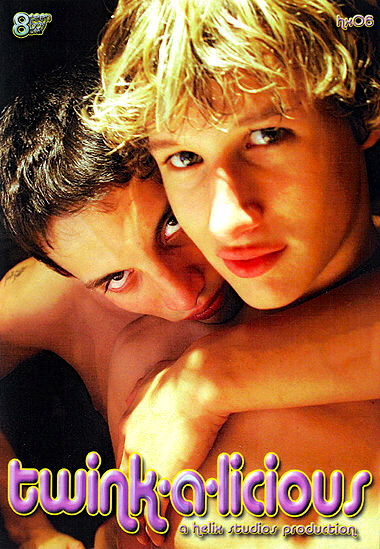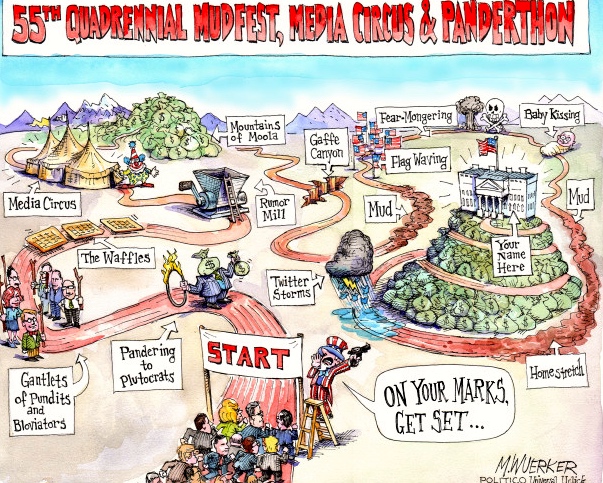My “Grocery store semiotics” posting looked briefly at two canned-food preparations: Manwich and Beefaroni. Manwich: “a canned sloppy joe sauce … The can contains seasoned tomato sauce that is added to cooked ground beef in a skillet” to yield a filling for hamburger buns. And Beefaroni: “pasta with beef in tomato sauce”, essentially a ground beef casserole in a can. Both names are portmanteaus, and both are somewhat opaque in their meaning.
Note that the (registered) names are for versions of preparations that can be made from scratch, and were so made long before they were marketed in cans. What the commercial versions supply is ease of preparation, not taste.
1. Manwich. On the sloppy joe:
A sloppy joe is a sandwich originating in the United States of ground beef, onions, tomato sauce or ketchup and other seasonings, served on a hamburger bun. (link)
The sloppy joe is at one end of the masculinity / manliness scale of food (in the sandwich world, it shares that end of the scale with the Dagwood sandwich): it’s meat, it’s messy, and you hold it in your hand to eat it, no utensils needed — man’s food.
[Digression on the other end of the scale: the cucumber sandwich:
The traditional cucumber sandwich is composed of paper-thin slices of cucumber placed between two thin slices of crustless, lightly buttered white (or wheat in some cases) bread. (link)
This is a sandwich for ladies' teas or for effete men. And it figures in one of the great works of English literature, Oscar Wilde's comic play The Importance of Being Earnest. Early in the play:
Algernon [Moncrieff, to his manservant Lane]. And, speaking of the Science of Life, have you got the cucumber sandwiches cut for Lady Bracknell [and Gwendolyn Fairfax]?
[Algernon, talking to Jack Worthing, thoughtlessly consumes the sandwiches himself, one by one. Lady B. and Gwendolyn arrive.]
… Lady Bracknell: And now I’ll have a cup of tea, and one of those nice cucumber sandwiches you promised me.
… Algernon (picking up empty plate in horror). Good heavens! Lane! Why are there no cucumber sandwiches? I ordered them specially.
Lane (gravely). There were no cucumbers in the market this morning, sir. I went down twice.
Algernon. No cucumbers!
Lane. No, sir. Not even for ready money.
Yes, this is a total digression from sloppy joe sauce. Though it does have to do with masculinity, and that’s important in the Manwich world.]
Note: the brand name Manwich is a mass noun, but when you use Manwich to make sloppy joes, you have made Manwiches or manwiches; that’s the count noun Manwich / manwich. The product:
 (#1)
(#1)
Ok, so Manwich is a portmanteau of man and sandwich (with the parts sharing /æn/ in pronunciation, AN in spelling). Crudely, a Manwich (the count noun) is a man sandwich — that is, ‘a sandwich FOR men’ — and Manwich (the mass noun) is a sauce for making Manwiches. Semantically, the brand name is a massification of the sandwich name. (On sandwiches, see this posting.)
Once you have Manwich, other -wich words suggest themselves. A number of these are attested, with various interpretations of -wich. There’s hamwich merely meaning ‘ham sandwich’, or referring to a particular sandwich, a baked ham and cheese sandwich on a dinner roll. And the ChikWich, a breaded chicken breast sandwich on a bun, sold at restaurants of that name. And the shrimpwich, in which other ingredients are sandwiched within a shrimp — in the Sunkist Lemon Shrimpwich with Yogurt-Mustard Dip Recipe (here). And the turkwich, lean turkey with Manwich sauce (and no breadstuff).
2. Beefaroni. Well, you say, no complication here, just beef + macaroni, understood copulatively. Beef and elbow macaroni, with tomato sauce, cooked in a casserole (preferably with cheese on top). And that’s what’s indicated in older photos of the product:
 (#2)
(#2)
More recent material merely specifies pasta, rather than macaroni specifically:
And the pasta in the photos is related to macaroni (it’s hollow and cut into short pieces), but lacks the curves Americans expect in this pasta. For reference, here’s a pile of elbow macaroni:
On macaroni (with the key to the pasta puzzle):
Macaroni is a variety of dry pasta made with durum wheat. Elbow macaroni noodles normally do not contain eggs, (although they may be an optional ingredient) and are normally cut in short, hollow shapes; however, the term refers not to the shape of the pasta, but to the kind of dough from which the noodle is made. [In common usage, the term does indeed refer to the shape.]
… The name derives from Italian maccheroni, however Italians use maccheroni to refer to any form [of pasta] (link)
The Italian usage survives in the US in the product Rice-A-Roni (which involves vermicelli rather than elbow macaroni). From Wikipedia:
Rice-A-Roni is a product of PepsiCo’s subsidiary, the Quaker Oats Company. It is a boxed food mix that consists of rice, vermicelli pasta, and seasonings. To prepare, the rice and pasta are browned in butter, then water and seasonings are added and simmered until absorbed.
In 1895, Italian-born immigrant Domenico (“Charlie”) DeDomenico moved to California, where he set up a fresh produce store. A successful businessman, he married Maria Ferrigno from Salerno, Italy. Back home, her family owned a pasta factory, so in 1912 she persuaded him to set up a similar business in the Mission District of San Francisco. The enterprise became known as Gragnano Products, Inc. It delivered pasta to Italian stores and restaurants in the area.
Domenico’s sons, Paskey, Vince (1915–2007), Tom, and Anthony, worked with him. In 1934, Paskey changed the name to Golden Grain Macaroni Company. Inspired by the pilaf recipe she received from Mrs. Pailadzo Captanian, Tom’s wife, Lois, created a dish of rice and macaroni, which she served at a family dinner. In 1958, Vince invented Rice-A-Roni by adding a dry chicken soup mix to rice and macaroni. It was introduced in 1958 in the Northwestern United States and went nationwide four years later. Because of its origins, it was called “The San Francisco Treat!”.
Many people find it hard to hear the name Rice-A-Roni without hearing the “San Francisco Treat” jingle, as in this 1995 commercial:
Here’s an array of Rice-A-Roni products — the original chicken flavor and two of the many newer flavors:
So far, that’s two foods with names in aroni, -aroni, or -a-roni, combining a main ingredient name (beef, rice) with macaroni, either referring to elbow macaroni or to any kind of pasta.There are plenty of others, to the point where we might want to think of -aroni as a candidate for a libfix denoting a pasta casserole. There’s at least chickaroni (chicken), hamaroni, turkaroni (turkey), sausage-aroni, and lamb-a-roni. Even a Cheesearoni Beef Casserole (with mozzarella, parmesan, and cottage cheese). Then, more inventively, there’s Rach-aroni paella from Rachel Ray, involving vermicelli, rice, peas, chorizo sausage, and chicken; smackaroni and cheese, with macaroni, cubed longhorn, and cubed swiss; mushroom faux-a-roni (a Rice-a-Roni from scratch recipe, using cut or broken spaghetti); and fake-aroni and cheese, made from cauliflower heads, cheddar cheese, and cream cheese (but no pasta). No doubt there are more.
































